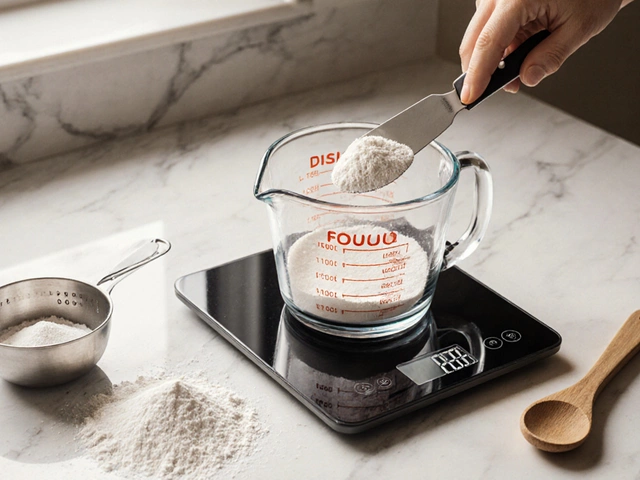
Fudge is delightful, right? But when it comes to storing it, things can get a bit tricky. Do you let it chill in the fridge or dump it into the freezer? Well, it makes more of a difference than you might think.
First off, storage isn't just about saving space or making your fudge last longer. It's all about the texture. You want that perfect balance—firm but not rock-hard, moist but not sticky. The fridge comes in handy for that. It keeps the fudge firm without destroying its creamy consistency. But what about the freezer?
Popping fudge in the freezer can be fantastic if you need it to last for weeks or even months. It halts chemical reactions and keeps those flavors fresh and vibrant. However, it can also change the texture if left in too long, turning that smooth bite into something more brittle and icy.
So, what should you do? There’s no one-size-fits-all answer, but understanding how these methods work can help you decide. Love your fudge gooey and fresh? Stick with the fridge. Need it out of sight, out of mind, for a while? Go ahead and freeze it, but pack it well to prevent freezer burn.
- The Basics of Fudge Storage
- When to Use the Fridge
- Pros and Cons of the Freezer
- Tips for Perfect Chilled Fudge
The Basics of Fudge Storage
Storing fudge properly can be more of a science than you'd expect. The key is understanding its ingredients and how they interact with temperature. Fudge is usually made with sugar, butter, condensed milk, and chocolate. These ingredients give fudge its rich flavor and creamy texture, but they also make it sensitive to temperature and humidity changes.
Why Temperature Matters
The sugar crystals in fudge are big players. They need cooler temps to stay stable and keep fudge firm and smooth. If it gets too warm, you might end up with a sad, sticky mess. A cool, dry place is ideal for maintaining that perfect balance of taste and texture.
Using the Fridge Correctly
For short-term storage, the fridge is like a magic wand. It keeps fudge at a consistently cool temperature, avoiding the heat that turns it into goo. Make sure to wrap it tightly in plastic or foil to prevent it from drying out or picking up fridge odors. A sealed container also works wonders.
Freezer: To Use or Not to Use?
If you’re looking to stockpile fudge for a rainy day, the freezer is your friend. Just take care to wrap it well, ideally in at least two layers of airtight wrap, and pop it in a freezer-safe bag. This stops freezer burn, which is something that can ruin the candy's delightful texture.
Temperature control really is crucial in storage. Here's something to chew on: studies show that fudge stored in too warm or fluctuating temperatures can harden or become overly sugary, losing that melt-in-mouth magic.
When to Use the Fridge
So, why choose the fridge for storing your fudge? Well, it’s great for short-term storage. If you plan to eat that batch within a week or two, the fridge is your best bet. It helps maintain the fudge’s chewy, delightful texture. Plus, it keeps it fresh without freezing it solid.
Ideal Temperature and Location
First things first, aim for a shelf or drawer, not the door. The door area is warmer and can cause more temperature fluctuations. Ideally, you want to store fudge at around 35-40°F (that's 1-4°C)—the sweet spot for holding its firmness and flavor.
The Moisture Factor
Fudge hates being dry, yet it shouldn't be overly moist either. Too much moisture can leave it sticky, while too little dries it out. You can wrap your fudge in wax paper first, then pop it inside an airtight container. This prevents humidity from messing with its texture.
Quick Access and Convenience
One big reason for using the fridge? Easy access. Got a sudden fudge craving? You don’t have to plan ahead to defrost; it’s ready when you are—no waiting, just biting. This is especially handy if you’ve got guests coming over and need those treats ready to serve at a moment’s notice.
Seasonal and Recipe Considerations
Certain types of fudge recipes, like ones with extra cream or butter, tend to be softer. Refrigerating them ensures they don’t turn into soup. Seasonal varieties, like pumpkin spice or peppermint flavored, often benefit from being in the fridge to enhance their taste profile without losing that special touch.
Ultimately, using the fridge is all about keeping your fudge flavorful and just right for immediate delight!

Pros and Cons of the Freezer
Alright, so you've made a batch of fudge, but there's no way you can eat it all in one go. Enter the freezer! Let’s talk about why this cold storage option might be your fudge's BFF—or not.
Pros of Freezing Fudge
- Extended Shelf Life: Freezing your fudge can extend its life by months, sometimes even up to a year if stored correctly. That means you can indulge your sweet tooth whenever you like without worrying about spoilage.
- Flavor Preservation: A well-sealed package will keep the flavors locked in, so when you do defrost a piece, it tastes just as fresh as when you made it. Make sure you're using airtight containers!
- Convenience: Got unexpected guests or a sudden chocolate craving? Your stash of homemade fudge in the freezer is ready to save the day in minutes. Simply let it thaw, and you're good to go!
Cons of Freezing Fudge
- Texture Changes: Over time, frozen fudge may lose some of its creaminess and become a bit gritty. It’s all about those pesky ice crystals forming as it freezes.
- Defrosting Needs: Before your fudge is ready to eat, it requires some patience. You’ll need to let it defrost in the fridge for a few hours to bring it back to its preferred eating state.
- Risk of Freezer Burn: If not stored properly (aka airtight packaging), your fudge might develop freezer burn, which can lead to dehydration and off flavors. Definitely not what you want from your cherished dessert!
So, to freeze or not to freeze? If you’re planning long-term storage for your fudge recipes, it's worth considering. Just make sure your fudge is securely wrapped, maybe even double-bagged, to prevent any of that unwanted freezer drama.
Tips for Perfect Chilled Fudge
Ready to chill your fudge like a pro? It’s all about the details. Let’s make sure you get the best out of your chilling process, whether you're using the fridge or freezer.
Chilling in the Fridge
Want your fudge to stay creamy yet firm? The fridge is your friend! Here’s how to do it:
- Wrap It Right: Use parchment paper or plastic wrap to cover your fudge. This prevents it from drying out or soaking up fridge odors.
- Airtight is Key: Pop it in an airtight container. This avoids unwanted moisture while preserving the taste.
- Chill Time: Your fudge only needs about 2-3 hours in the fridge to set nicely.
The fridge helps maintain that luscious texture while keeping it fresh. If you’re tackling a busy week, it's fast, easy, and effective.
Freezing Fudge
Need to store that fudge for a future craving? Freezing is your go-to method, but you need to do it the right way:
- Slice Before Freezing: Cut fudge into serving pieces before freezing. It thaws quicker and lets you grab a piece whenever the craving hits.
- Double Wrap: Use both cling film and foil to ensure a snug fit, keeping freezer burn at bay.
- Label & Date: Trust me, dates matter. Jot down the date you freeze it so you know how long it’s been chilling.
Fudge can easily last in the freezer for up to 3 months if properly stored. Just remember, allow it to thaw in the fridge overnight before indulging.
Texture Tricks & Tips
Universal tricks for that ultimate fudge experience:
- Room Temp Revival:Bring room temperature back for the perfect texture. A quick 10-minute counter session before serving does wonders.
- Check the Consistency:When in doubt, a spoon test works well. If your fudge is soft enough to cut with a spoon, you’ve nailed it.
These tips are designed to elevate your fudge game. Whether it's a fridge quick fix or long-term freezer storage, achieving that delectable chewiness is just a chill away.












Write a comment